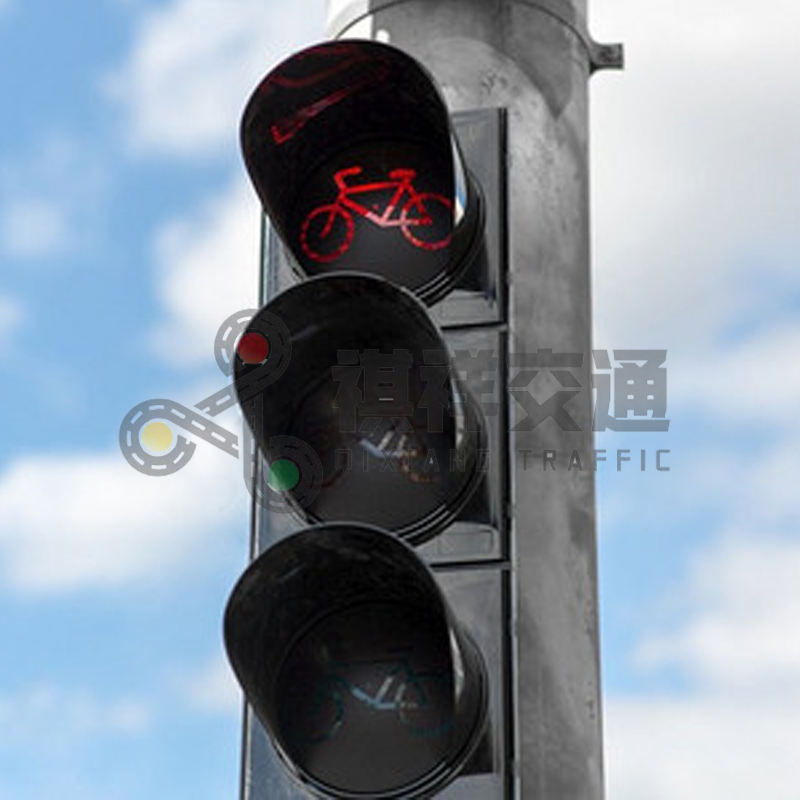As urban areas continue to grow, the integration of bicycle-friendly infrastructure becomes increasingly important. One of the most important advancements in this area is the implementation of LED traffic lights for bicycles. These lights are designed to increase safety and visibility for cyclists on the road, but they also come with specific precautions that users should be aware of. This article will explore the importance of LED traffic lights for bicycles and outline basic precautions for their effective use.
Learn about bicycle LED traffic lights
Bicycle LED traffic lights are specialized signals that provide clear instructions to cyclists at intersections and intersections. Unlike standard traffic lights, these LED signals are often designed with bright colors and unique shapes to ensure they are easily visible to cyclists. Their role is to regulate bicycle traffic, alerting riders when it is safe to proceed or when they must stop. The use of LED technology also means these lights are more energy efficient and last longer than traditional incandescent bulbs.
Importance of Bicycle LED Traffic Lights
The main purpose of bicycle LED traffic lights is to improve the safety of cyclists. As the number of bicycles on the road continues to increase, it is vital to have dedicated signals that cater specifically to their needs. These lights help reduce confusion at intersections where cyclists might otherwise be unsure of their right of way. By providing clear visual cues, bicycle LED traffic lights can significantly reduce the likelihood of accidents involving cyclists and motor vehicles.
Additionally, these lights could encourage more people to choose cycling as a mode of transportation. When cyclists feel safer on the roads, they are more likely to choose to cycle rather than drive, helping to reduce traffic congestion and lower carbon emissions.
Precautions for using bicycle LED traffic lights
While bicycle LED traffic lights are designed to enhance safety, cyclists must take certain precautions to ensure they are used effectively. Here are some important tips for cyclists:
1. Stay alert and aware
Even with bicycle LED traffic lights, cyclists should remain alert. Always be aware of your surroundings, including other vehicles, pedestrians and potential hazards. Just because the light is green doesn’t mean it’s safe to continue driving without checking for oncoming traffic.
2. Obey traffic signals
Cyclists must obey the signals given by bicycle LED traffic lights. This means stopping when the light is red and only continuing when the light turns green. Ignoring these signals can lead to dangerous situations, not only for cyclists but also for other road users.
3. Use Gestures
When approaching an intersection with bicycle LED traffic lights, your intentions must be communicated to other road users. Use hand signals to indicate turns or stops. This practice increases visibility and helps prevent accidents.
4. Location on the road
When approaching a traffic light, position yourself correctly in the lane. If there are designated bike lanes, use them. If not, make sure you are in a position where the driver can see it. Avoid riding too close to the curb as this will make you less visible and increase the risk of being struck by a vehicle.
5. Be careful of turning vehicles
For cyclists, one of the most significant risks at intersections is turning vehicles. Be careful when the light is green as vehicles may turn left or right. Look for any vehicles that may not see you or may not yield the right of way.
6. Maintain your bike
A well-maintained bicycle is essential for safe riding. Check your brakes, tires and lights regularly to make sure they are working properly. If your bike is in good condition, you’ll be better able to cope with changing traffic conditions, including those indicated by your bike’s LED traffic lights.
7. Know local laws
Traffic regulations can vary widely from location to location. Familiarize yourself with the specific regulations regarding bicycle traffic lights in your area. Knowing the rules will help you navigate intersections safely and legally.
8. Use reflective equipment
Visibility is key when riding, especially at night or in low-light conditions. Wearing reflective clothing and using lights on your bike can increase your visibility to drivers and other road users, making it easier for them to see you at intersections with bicycle LED traffic lights.
9. Pay attention to weather conditions
Weather can seriously affect visibility and road conditions. Rain, fog or snow can make it more difficult for drivers to see cyclists. In adverse weather conditions, use extreme caution when approaching traffic lights and be prepared to stop if necessary.
10. Advocate for better infrastructure
Finally, as a cyclist, you can play a role in advocating for better cycling infrastructure in your community. Support initiatives to promote the installation of LED traffic lights for bicycles and other safety measures. Working with local government and community organizations can improve safety for all cyclists.
In conclusion
Bicycle LED traffic lights are an important part of modern bicycle infrastructure and are designed to improve cyclists’ safety and visibility. However, cyclists must take precautions when using these lights. By staying alert, obeying traffic signals, and maintaining their bikes, cyclists can navigate intersections safely and confidently. As cities continue to invest in bike-friendly infrastructure, the collective responsibility of cyclists and motorists is critical to creating safer roads for everyone.
Post time: Oct-25-2024







